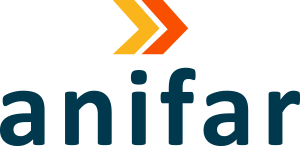Flutter
Key Aspects and Features
Flutter is an open-source UI software development toolkit created by Google. It is used for building natively compiled applications for mobile, web, and desktop from a single codebase. Flutter is known for its fast development, expressive and flexible UI, and excellent performance.

Dart Programming Language:
Flutter uses the Dart programming language, which was also developed by Google. Dart is known for its simplicity and efficiency, making it well-suited for Flutter’s needs.
Widget-Based UI:
Flutter’s UI is built using a widget-based architecture. Widgets are reusable building blocks for creating user interfaces. Flutter provides a rich set of pre-designed widgets and allows developers to create custom widgets as well.
Hot Reload:
One of the standout features of Flutter is the hot reload functionality. Developers can make changes to the code and see the results immediately in the running app, speeding up the development process and making it more interactive.
Cross-Platform Development:
Flutter allows developers to write code once and run it on multiple platforms, including iOS, Android, web, and desktop (Windows, macOS, and Linux). This helps save development time and resources.
Rich Ecosystem:
Flutter has a growing ecosystem of packages and plugins available through the Flutter package manager (pub.dev). These packages cover a wide range of functionalities, including database integration, animations, and state management.
Material Design and Cupertino:
Flutter provides two sets of widgets: Material Design widgets for Android-style apps and Cupertino widgets for iOS-style apps. This allows developers to create apps that adhere to the design principles of each platform.
Performance:
Flutter apps are natively compiled to ARM and x86 code, which makes them highly performant. Flutter’s architecture allows for smooth animations and high frame rates, resulting in a great user experience.
Community and Documentation:
Flutter has an active and growing community of developers. Google provides extensive documentation, tutorials, and sample code to help developers get started and troubleshoot issues.
Desktop and Web Support:
Flutter extends its capabilities beyond mobile to desktop and web platforms. Developers can target multiple platforms with the same codebase, opening up new possibilities for app distribution.
Customization and Theming:
Flutter allows for deep customization and theming of widgets, making it easy to create unique and branded user interfaces.
State Management:
Flutter doesn’t prescribe a specific state management solution but provides flexibility for developers to choose from various options like Provider, Riverpod, Redux, MobX, and more.
Testing:
Flutter has a robust testing framework that allows for unit testing, widget testing, and integration testing to ensure the reliability of your app.
Internationalization:
Flutter provides tools and libraries for internationalization (i18n) and localization (l10n), making it easier to reach a global audience.
Frontend and Backend Technology Stacks
We combine technology with business concepts that help make your website easy to use.















